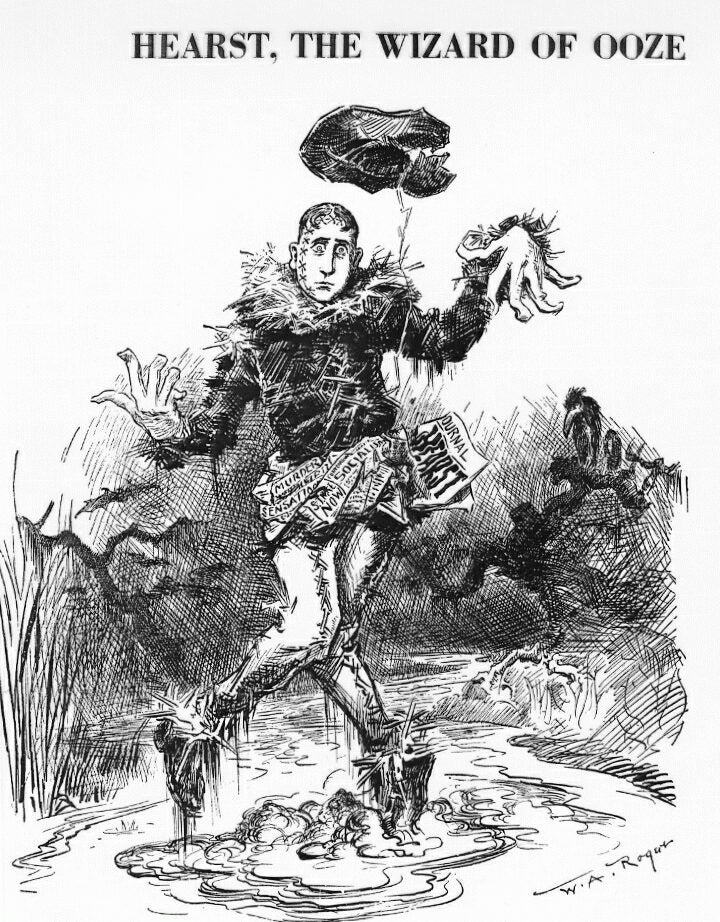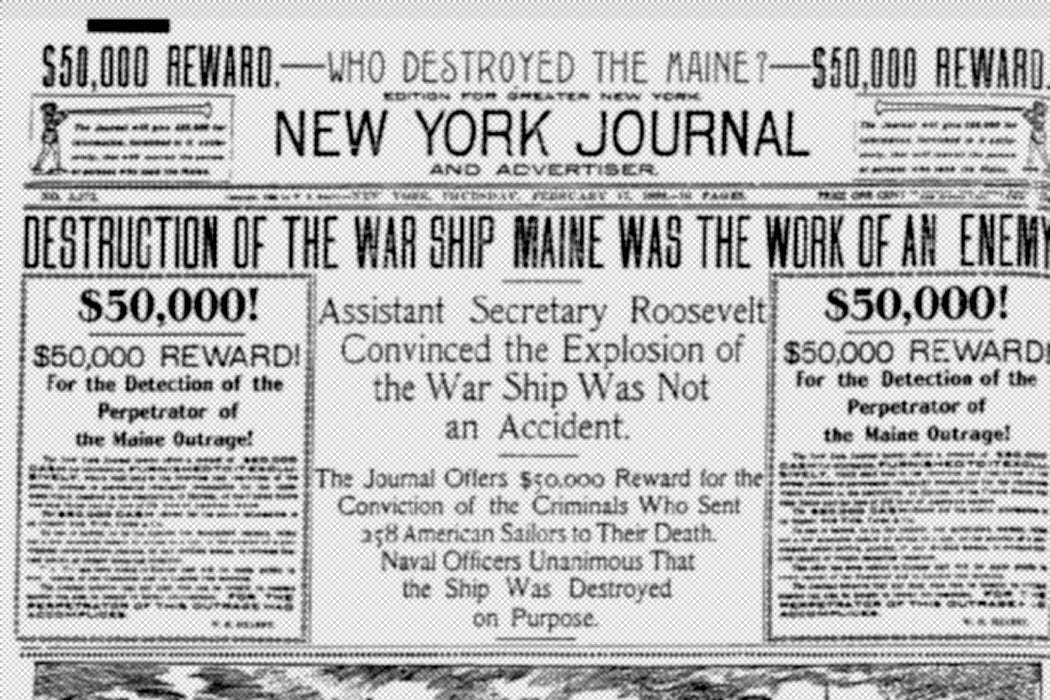How The Internet Ruined Everything (Or Did It?)
Fake news is the latest culprit in the continuing saga of How The Internet Ruined Everything.
Here’s how the story goes: a mix of cynical political operators and business opportunists have blanketed the internet, and social networks in particular, with wholly manufactured news stories and publications. Conservative voters are far more susceptible to fake news, so the net effect of our fake news epidemic was to deliver the U.S. election to Donald Trump.
It’s hard to argue with the narrative, which has now been backed up with interviews by fake news producers, and with data on the spread of fake new stories. In answer to the big question this narrative raises—what now?—Jeff Jarvis and John Bothrick have written a terrific piece outlining some specific ways to combat fake news.
Yet we are unlikely to prevail in this battle if we treat the problem of fake news as a creature of the internet—or, for that matter, as a problem unto itself. Fake news is part of a larger problem of “click journalism”: media that focuses on getting online click-throughs, or on “clicking” with our pre-conceived bias.
Fake News’ Print-World Antecedents
Click journalism has plenty of precedents in the history of mass media, and particularly, in the history of American journalism. That history includes a period of journalism so disreputable that it coined a term: “yellow journalism.” As described by Joseph Patrick McKerns in his 1976 History of American Journalism:
The yellow journalism of the 1890’s and tabloid journalism of the 1920’s and the 1930’s stigmatized the press as a profit motivated purveyor of cheap thrills and vicarious experiences. To its many critics it seemed as though the press was using the freedom from regulation it enjoyed under the First Amendment to make money instead of using it to fulfill its vital role as an independent source of information in a democracy. The Commission on Freedom of the Press, chaired by Robert M. Hutchins, issued a report in 1947, A Free and Responsible Press (Chicago: University of Chicago Press, 1947) which urged the press to be “socially responsible.”
Thomas Arthur Gullason enumerates the features of yellow journalism as
a dependence on “the familiar aspects of sensationalism—crime news, scandal and gossip, divorces and sex, and stress upon the reporting of disasters and sports”; “the lavish use of pictures, many of them without significance, inviting the abuses of picture-stealing and ‘faked’ pictures;” and “impostures and frauds of various kinds, such as ‘faked’ interviews and stories.”
In her 1910 critique of the newspaper industry, Frances Fenton quoted President Theodore Roosevelt’s own accusation that contemporary newspapers “habitually and continually and as a matter of business practice every form of mendacity known to man, from the suppression of the truth and the suggestion of the false to the lie direct.”
Yellow Journalism’s Critics
Both at the time and in retrospect, critics of yellow journalism saw its sensationalism and dishonesty as a business strategy. Writing in 1922, Victor Yarros noted that
Some writers have not hesitated to indict the entire newspaper business-or profession-on such charges as deliberate suppression of certain kinds of news, distortion of news actually published, studied unfairness toward certain classes, political organizations and social movements, systematic catering to powerful groups of advertisers, brazen and vicious “faking,” and reckless disregard of decency, proportion and taste for the sake of increased profits.
That profit motive was even cited as a driver of the Spanish-American War, which by many accounts was fed by yellow journalism, and in particular, by the way the New York Press covered the sinking of the U.S.S. Maine in the port of Havana. Louis A. Pérez, himself part of the scholarly movement to question this tidy historical narrative, quotes a typical argument, made by Joseph E. Wisan in 1934: “the Spanish-American War would not have occurred had not the appearance of Hearst in New York journalism precipitated a bitter battle for newspaper circulation.”
History being made by an unscrupulous press, driven to sensationalize stories and fabricate facts in a quest for eyeballs and dollars….yep, sounds familiar. But it’s not a straight line from the yellow journalism of a century ago to the fake news of today’s internet, unless you want to skip over a bunch of decades in which we had some expectation of the news being actually true.
The Rise of Real News
As early as 1898, Sidney Pomerantz notes in his history of the New York Press, a publication for the newspaper industry wrote that “The public is becoming heartily sick of fake news and fake extras. Some of the newspapers in this town have printed so many lying dispatches that people are beginning to mistrust any statement they make.” Pomerantz himself argues that “[b]y the turn of the century, yellow journalism was on the decline, with the World leading the way back to ‘normalcy.’” He attributes this shift to the success of the New York Times, which proved the profitability of a “highly conservative paper,” particularly relative to the hard times at the New York Journal, the flagship “yellow” publication owned by William Randolph Hearst.

But to say that yellow journalism waned because the public wanted something better is to oversimplify the story. Alongside the public, the courts’ attitudes towards the media shifted, inspired less by the outright falsehoods published in turn-of-the-century papers than by their intrusions into the lives of public figures. In her article “Judging Journalism,” Amy Gajda points out that our notion of a constitutional right to privacy actually traces back to late nineteenth-century concern with “ the prying eyes of yellow journalists and gossip-mongers.” This fed a growing body of legal scholarship and opinion that placed privacy rights ahead of First Amendment rights: Gajda notes that by the 1920s and 30s, “the weight of decisions during this period held newspapers and other related media responsible for privacy invasions with growing frequency.”
In addition to public opinions and the courts, the early twentieth century saw a third check on yellow journalism and fake news: the newspaper industry itself. In 1910, W.E. Miller proposed the industry’s first code of ethics, as adopted by the Kansas State Editorial Association:
Lies. We condemn against truth:
(1) The publication of fake illustrations of men and events of news interest, however marked their similarity, without an accompanying statement that they are not real pictures of the event or person but only suggestive imitations.
(2) The publication of fake interviews made up of the assumed views of an individual, without his consent.
(3) The publication of interviews in quotations unless the exact, approved language of the interviewed be used. When an interview is not an exact quotation it should be obvious in the reading that only the thought and impression of the interviewer is being reported.
(4) The issuance of fake news dispatches whether the same have for their purpose the influencing of stock quotations, elections, or the sale of securities or merchandise. Some of the greatest advertising in the world has been stolen through the news columns in the form of dispatches from unscrupulous press agents. Millions have been made on the rise and fall of stock quotations caused by newspaper lies, sent out by designing reporters.
Writing about the Kansas code 12 years later, Alfred G. Hill argued that it had been successful in establishing a norm of media truthfulness:
In regard to the condemning of untruthful statements, there has been an advance since the adoption of the Code. There is now practically no use of fake illustrations and fake interviews. However, interviews are still published in Kansas, just as in other states, which violate the requirement in the Code that only exact quotations be used in quotation marks.
The adoption of similar codes across the US was so widespread that by 1955, Eustace Cullinan could reasonably claim in the American Bar Association Journal that “[i]n recent decades the press of the nation has developed a code of ethics to which it adheres within reason, though sometimes stooping a little to get results.”
Both the waxing and waning of yellow journalism offer important insights into the problem of fake news as it exists today. First and foremost, we have to stop seeing this as a technology story: lousy, irresponsible media not only predates the internet, but it predates the printing press. (Do you really think Homer recounted every detail of the Trojan War with precise accuracy?) The internet may have made fake news a bigger problem, and it has certainly made it a more complicated problem to tackle, but there is a longstanding tension between a public interest in conscientious reporting and private interests in salacious headlines and easy profits.
Just as important, we have to stop seeing this as a fake news story. While early twentieth-century media critics invariably cited outright fabrication as part of the yellow journalism phenomenon, they recognized that fake news was only part of a larger problem of sensationalistic headlines, intrusive reporting, and journalism that placed sales over accuracy.
Where That Leaves Us
What observers of yellow journalism recognized —and what we need to recognize today—is that fake news does not appear in a vacuum. Established media outlets and social networks are not just supported by the dollars-for-clicks they earn by displaying fake news headlines; they are increasingly built upon a common culture of clickbait-y headlines, partisan hyperbole, and a prioritization of human interest stories over hard news.
We can feel superior for fact-checking what we share, and recognizing the difference between a true and a false headline. But we’re not going to conquer the problem of fake news unless we reject the much broader set of stories, news sources, and websites in which they are situated: the ever-growing slice of online, print, and broadcast media that feeds us celebrity gossip and listicles in place of actual content.
Just as with the demise of yellow journalism, each of us has a role to play in shaping the relative profitability of quality journalism and the click journalism with which fake news is profoundly entangled. As long as we give our time, our dollars and our clicks to unreputable sites like these, fake news will continue to thrive. Or we can read, share and support the news and commentary produced by responsible media outlets, and see click journalism wither away, just as yellow journalism did a century ago.







